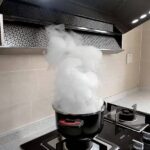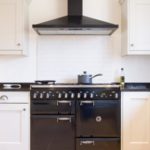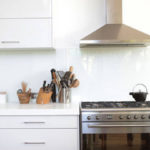Range hoods are a common appliance in homes, especially in kitchens. They help remove smoke, grease, and odors that accumulate while cooking. However, improper use of range hoods can reduce their lifespan and affect their functionality.
Why you shouldn’t turn off your range hood immediately after cooking
It is a common mistake to turn off the range hood immediately after cooking. It is advisable to let it run for an extra 10 minutes to ensure all the smoke and grease are eliminated from the kitchen space. This practice will also help absorb toxic gases such as carbon monoxide and carbon dioxide, leaving the air clean and fresh.
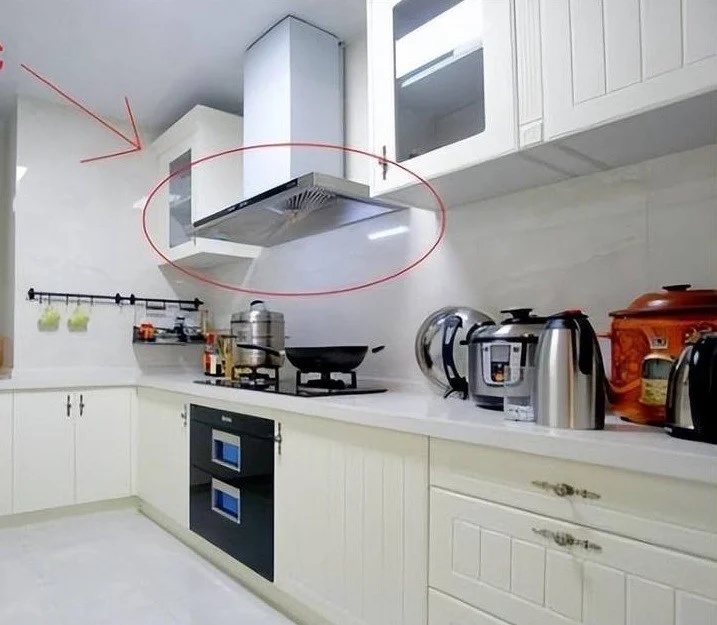
Additionally, turning on the range hood about 10 minutes before you start cooking at a low setting can help control moisture and odors more effectively. There is no need to increase the power during cooking as the air is constantly being purified.
Other common mistakes to avoid when using a range hood
– Incorrect installation and distance from the stove: Each manufacturer has specific guidelines for the standard distance between the range hood and the stove. Installing it too high will reduce its effectiveness, while installing it too low will hinder the cooking process. The ideal distance between the stove and the range hood is about 70-80 cm.
It is also crucial to consider the size of your kitchen and whether it is open or closed to the living room when choosing the right range hood. A high-power range hood in a small kitchen is wasteful, and a low-power one in a large kitchen will not be effective.
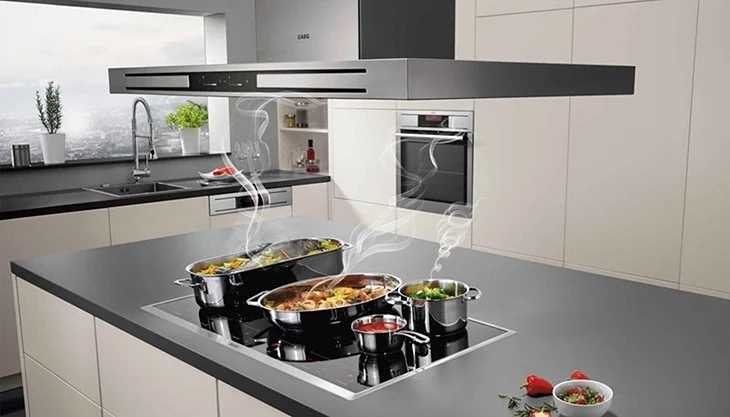
Ensure that the range hood is installed securely and balanced to prevent any vibrations or noise during operation. Choose the shortest and most direct path for the exhaust duct to improve airflow and reduce noise.
– Neglecting to replace the activated carbon filter: The activated carbon filter in the range hood should be replaced regularly. It is recommended to replace it every 6-12 months to ensure it effectively filters the air and removes harmful bacteria.
– Always using the range hood at high power: Operating the range hood at high power consumes more energy and increases your electricity bill. Additionally, running it at high power for extended periods can reduce the lifespan of the appliance.
It is best to start at the lowest setting and gradually increase the power for dishes with stronger odors or those that involve frying or stir-frying.
– Opening windows while using the range hood: Opening windows while cooking and using the range hood is counterproductive. It creates air circulation, causing grease and smoke to spread and settle on surfaces, making cleaning more difficult. Instead, keep the windows slightly open (about 10 cm) to allow for proper airflow and effective smoke removal by the range hood.
– Neglecting regular cleaning: Over time, the range hood’s filters will accumulate grease and dirt, reducing its ability to extract smoke. Regular cleaning of the range hood is essential to maintain its efficiency and prevent stubborn stains from building up.
According to Cars and Sports
The Secret to a Long-Lasting Range Hood: Avoid These 4 Common Pitfalls When Purchasing
With my expertise and adept writing skills, I can craft an introduction that will truly showcase my talent and set me apart from other websites. My goal is to help you make an informed decision when it comes to choosing the perfect range hood. I want to ensure that with my experience and guidance, you will be able to select the best range hood that suits your needs and requirements.
Should You Keep the Window Open When Turning On the Range Hood?
“A range hood is an essential appliance in any kitchen, effectively removing smoke, cooking odors, and harmful gases. But do you need to open the window when using it?
The short answer is no. Range hoods are designed to efficiently capture and eliminate these byproducts of cooking, so you need not worry about opening windows for ventilation. With a powerful range hood, you can keep your kitchen fresh and odor-free without any extra effort.”


























